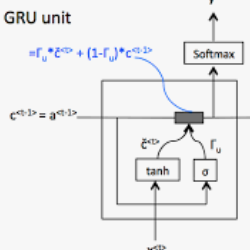There is a growing body of studies on applying deep learning to biometrics analysis. Certain circumstances, however, could impair the objective measures and accuracy of the proposed biometric data analysis methods. For instance, people with chronic pain (CP) unconsciously adapt specific body movements to protect themselves from injury or additional pain. Because there is no dedicated benchmark database to analyse this correlation, we considered one of the specific circumstances that potentially influence a person's biometrics during daily activities in this study and classified pain level and pain-related behaviour in the EmoPain database. To achieve this, we proposed a sparsely-connected recurrent neural networks (s-RNNs) ensemble with the gated recurrent unit (GRU) that incorporates multiple autoencoders using a shared training framework. This architecture is fed by multidimensional data collected from inertial measurement unit (IMU) and surface electromyography (sEMG) sensors. Furthermore, to compensate for variations in the temporal dimension that may not be perfectly represented in the latent space of s-RNNs, we fused hand-crafted features derived from information-theoretic approaches with represented features in the shared hidden state. We conducted several experiments which indicate that the proposed method outperforms the state-of-the-art approaches in classifying both pain level and pain-related behaviour.
翻译:在生物鉴别学分析中应用深入学习生物鉴别学的研究越来越多,但在某些情况下,可能会损害拟议的生物鉴别数据分析方法的客观措施和准确性。例如,慢性疼痛(CP)患者在意识上对特定身体运动进行无意识调整,以保护自己免受伤害或额外疼痛。由于没有专门的基准数据库来分析这种关联性,我们考虑了在本研究的日常活动中可能影响一个人生物鉴别学的具体情形之一,以及EmoPain数据库中分类疼痛程度和与疼痛有关的行为。为此,我们建议建立一个与封闭的经常性神经网络(s-RNNS)结合的微小连接的经常性神经网络(s-RNNNS),该神经网络使用共同的培训框架将多个自动编码器纳入其中。这一结构是由从惯性测量单元和表面电感测传感器收集的多层面数据所补充的。此外,为了弥补在S-RNNS的潜伏空间中可能不完全反映的时间层面的变化。为了实现这一目标,我们建议把从信息感应学方法衍生出来的特征结合到共同隐藏疼痛状态的特征。我们进行了数项相关的实验,这些实验表明与痛苦有关的状态。



